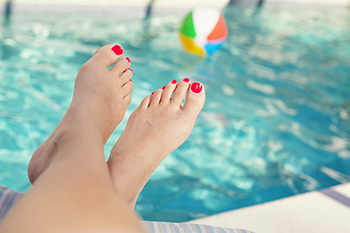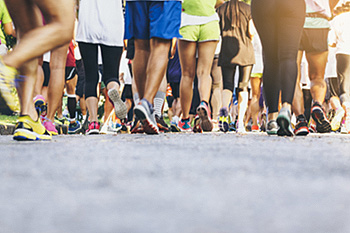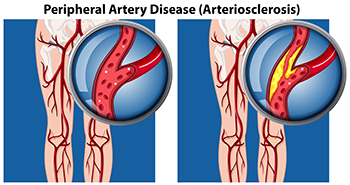
A common place for foot pain to develop is in the heel. It can indicate several foot issues, including plantar fasciitis, Achilles tendonitis, and heel spurs. All of these conditions are treatable, and a podiatrist is often contacted who can relieve the chronic pain that can be associated with these foot conditions. Flat feet may cause pain in some patients, and this is a result of little or no arch support. Wearing orthotics is a viable option that may help to diminish the pain and discomfort. A corn on the foot can bring excess pain to the patient. It is defined as a small, hardened area of skin that forms when pressure is exerted in a specific area of the foot, often the side of the pinky toe. This often happens as a result of wearing shoes and socks that are too tight. Foot pain for any reason can alter a patient's mood and can make completing daily activities challenging. A podiatrist is qualified to determine the cause of the foot pain and offer correct treatment options, so it is strongly urged that you contact this type of doctor as quickly as possible.
Foot Pain
Foot pain can be extremely painful and debilitating. If you have a foot pain, consult with Cary Golub, DPM from New York. Our doctor will assess your condition and provide you with quality foot and ankle treatment.
Causes
Foot pain is a very broad condition that could be caused by one or more ailments. The most common include:
- Bunions
- Hammertoes
- Plantar Fasciitis
- Bone Spurs
- Corns
- Tarsal Tunnel Syndrome
- Ingrown Toenails
- Arthritis (such as Gout, Rheumatoid, and Osteoarthritis)
- Flat Feet
- Injury (from stress fractures, broken toe, foot, ankle, Achilles tendon ruptures, and sprains)
- And more
Diagnosis
To figure out the cause of foot pain, podiatrists utilize several different methods. This can range from simple visual inspections and sensation tests to X-rays and MRI scans. Prior medical history, family medical history, and any recent physical traumatic events will all be taken into consideration for a proper diagnosis.
Treatment
Treatment depends upon the cause of the foot pain. Whether it is resting, staying off the foot, or having surgery; podiatrists have a number of treatment options available for foot pain.
If you have any questions, please feel free to contact our offices located in Williston Park, and Long Beach, NY . We offer the newest diagnostic and treatment technologies for all your foot care needs.




